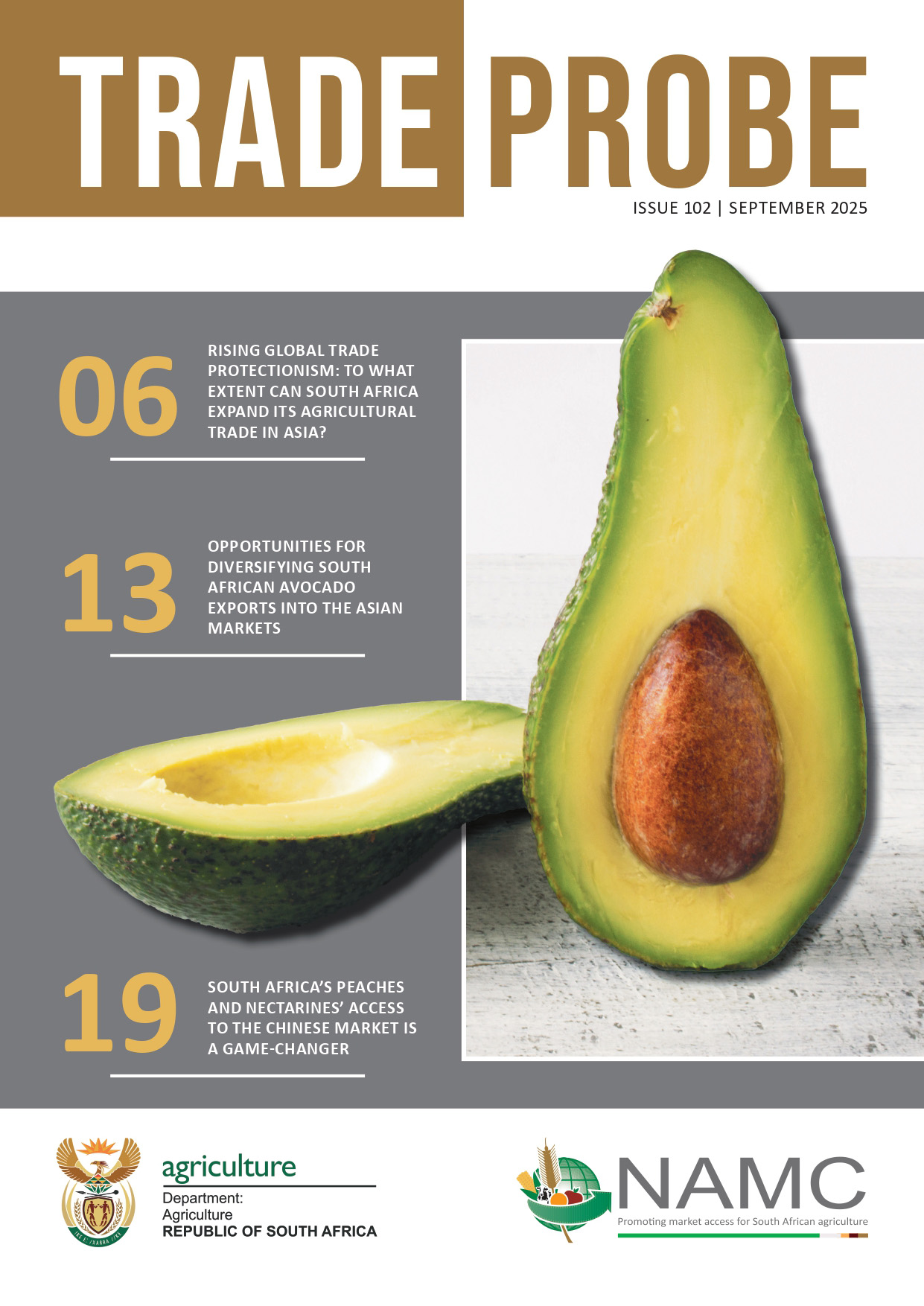CHINA AS A GROWTH FRONTIER FOR SOUTH AFRICAN MACADAMIA EXPORTS
By: Buhlebemvelo Dube
Introduction
Macadamia nuts are one of the key agricultural products that South Africa exports to the international market. The export value of fresh or dried macadamia nuts (shelled) is approximately $161 million, and $134 000 for the (in-shell) nuts (ITC, 2025), with shelled nuts accounting for a larger share. South Africa is the number one exporter of in-shell nuts in the world and in Africa, its strong export footprint in the international market is increasingly facing trade exposure due to numerous trade shocks fuelled by rising market access barriers in the form of tariffs and non-tariff measures (NTMs). Tariffs or customs duties are financial charges in the form of a tax imposed on merchandise imports, and they tend to give a price advantage to similar local goods and raise revenue for governments, as market access is conditional upon the payment of the customs duty, whether specific, ad valorem, or mixed tariff forms. NTMs, on the other hand, can take the form of quantitative restrictions and may be applied in the context of prohibitions, restrictions, or quotas. Amid rising market access barriers, one of the most strategic opportunities for macadamia exporters is the recently announced free trade protocol with China for African countries. China’s zero-tariff policy presents export opportunities that can be leveraged to unlock the massive Chinese markets.
Analysis of market access expansion for South African macadamia in the Chinese market
China`s zero tariffs under the Forum on China-Africa Cooperation (FOCAC) is a voluntary preferential trade platform that can enable trade expansion amid shrinking opportunities in traditional markets. Such trade initiatives are guided by the “Enabling clause” under the World Trade Organisation (WTO) and can be implemented as a series of non-reciprocal preferential trade agreements on goods exported (Zhina & Omoruyi, 2021). This policy promises to make market access much more predictable and liberal. WTO principles such as the Most Favoured Nation (MFN) and national treatment help drive trade to be non-discriminatory. The MFN principle tends to prohibit discrimination between imports irrespective of their origin or destination, while the national treatment principle prohibits discrimination between imported and locally produced products (WTO, 2025). Therefore, China’s initiative to implement a zero-tariff based on WTO principles provides a platform that can enable South African macadamia producers to effectively grow their income, boost demand, expand production and exports, and contribute to higher employment in the industry.
China is the second largest importer of macadamia nuts (shelled), HS code (080262) in the world, with a staggering import value of $43.4 million, following the United States of America (USA), which leads with an import value of $96.5 million (ITC, 2025). Furthermore, China is the leading importer of macadamia nuts (In shell), HS code ( 080261) in the world, with an import value of $249 million, followed by Vietnam, with an import value of $32 million. Moreover, the import value of in-shell macadamia for China has grown by 15% per annum between 2020 and 2024, and by 40% per annum growth in imported quantities in the same period. This upward trajectory is underpinned by a strong demand for macadamia nuts in China, and South Africa is well-positioned to fill this demand, considering that South Africa is the leading exporter of macadamia nuts (In shell) with an export value of $133 million, followed by Australia with an export value of $82.9 million (ITC, 2025). South Africa`s annual export growth value between 2020 and 2024 is 6% per annum (p.a), and its growth in quantity for the same period has been a modest 10% p.a. This growth has been underpinned by continuous investment by the industry towards research and development, as well as growing partnerships between private and public stakeholders (SAMAC, 2025). South African macadamia (in-shell) nut exports to the Chinese markets have grown significantly over the years from $35 million in 2020 to $127 million in 2024, as depicted in Figure 1 below. This has been shaped by strong demand from China and ample supply from South Africa, making these partners dominant players in the global macadamia nut trade.

Figure 1: SA macadamia exports between 2020 and 2024
Source: Authors` calculations based on ITC data
South African macadamia can benefit by looking towards the Chinese markets and capitalizing on the current wave of market access opportunities, without losing traditional markets. This would cushion producers from future trade shocks. Figures 2 and 3 illustrate the leading importers of macadamia nuts from South Africa, which points to the strong demand in China.

Figure 2: South Africa`s top export destinations for macadamia nuts
Source: Authors` calculations based on ITC data

Figure 3: South Africa`s top export destinations for in-shell macadamia
Source: Authors` calculations based on ITC data
Conclusion
Agricultural trade is crucial in safeguarding global food security during temporary or protracted food deficits which may result from adverse climate-related conditions or any other conditions in global markets. It is through trade that consumers access affordable and nutritious food globally. However, when there are rising barriers in the international trade landscape, food security is threatened, and thus, China`s zero-tariff policy is a positive step towards safeguarding food security, and it also presents real gains for macadamia exporters in South Africa. Despite NTMs that may still be an obstacle, there is much to be gained from such a policy direction and also by consolidating strategic partnerships with the Chinese market, especially during uncertain trade environments in the world. It is clear that market diversification is a need, and this approach can be done without losing traditional macadamia markets. Diversification is a vital approach that cushions trade shocks in an increasingly unpredictable and volatile trade landscape.


